Click on images to enlarge
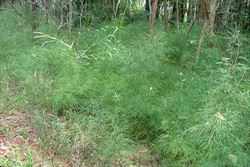
large infestation in a eucalypt woodland (Photo: Sheldon Navie)

dense infestation in a paperbark woodland (Photo: Sheldon Navie)
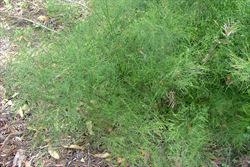
habit (Photo: Sheldon Navie)
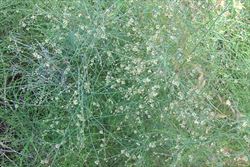
habit in flower (Photo: Sheldon Navie)
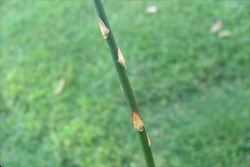
close-up of main stem (Photo: Sheldon Navie)
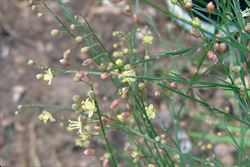
flowers and flower buds (Photo: Sheldon Navie)
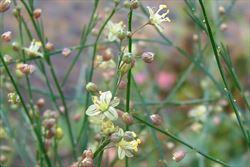
close-up of flowers (Photo: Sheldon Navie)
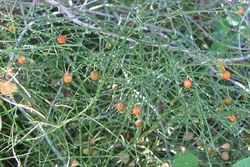
mature fruit (Photo: Sheldon Navie)
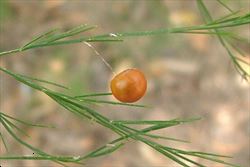
close-up of mature fruit (Photo: Sheldon Navie)
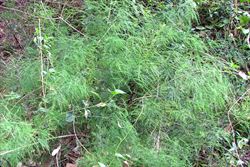
infestation in disturbed riparian rainforest along Enoggera Creek in The Gap in Brisbane (Photo: Sheldon Navie)
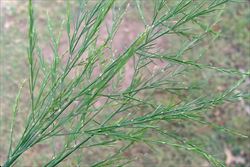
densely branched stems with numerous 'leaves' (Photo: Sheldon Navie)
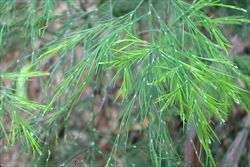
close-up of young 'leaves' (Photo: Sheldon Navie)
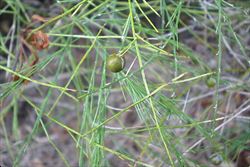
close-up of immature fruit and needle-like 'leaves' (Photo: Sheldon Navie)
Scientific Name
Asparagus virgatus Baker
Synonyms
Protasparagus virgatus (Baker) Oberm.
Family
Asparagaceae (Queensland, New South Wales, the ACT and Western Australia)Liliaceae (Victoria, Tasmania, South Australia and the Northern Territory)
Common Names
asparagus fern, broom fern, tree fern
Origin
Native to eastern and southern Africa (i.e. Tanzania, Mozambique, Zambia, Namibia, South Africa and Swaziland) and the Arabian Peninsula (i.e. Yemen).
Naturalised Distribution
Naturalised in some parts of eastern Australia (i.e. relatively widespread in south-eastern Queensland and less common in the coastal districts of central New South Wales).
Notes
This species is regarded as a minor environmental weed in eastern Queensland and as a "sleeper weed" or potential weed in other parts of Australia (e.g. in north-eastern New South Wales). It was introduced as a garden ornamental and is still quite common in old gardens. Its potential distribution in Australia is thought to be restricted to the coastal and sub-coastal districts of New South Wales and Queensland, from Townsville in the north to Sydney in the south. It spreads via creeping underground stems to form large and dense patches that replace native vegetation. It is mainly found in riparian areas and near forest margins, or in disturbed sites and waste areas near habitation.

